13+ Sample Employee Action Plan
-
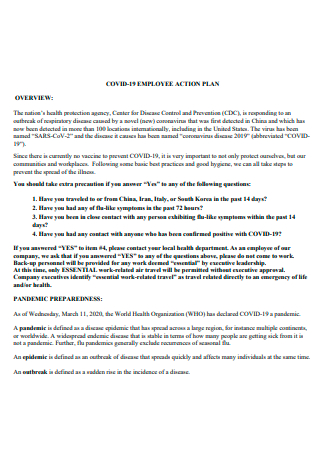
Covid-19 Employee Action Plan
download now -
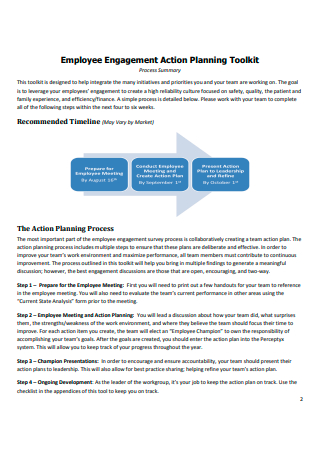
Employee Engagement Action Planning
download now -

Employee Performance Self Directed Action Plan
download now -
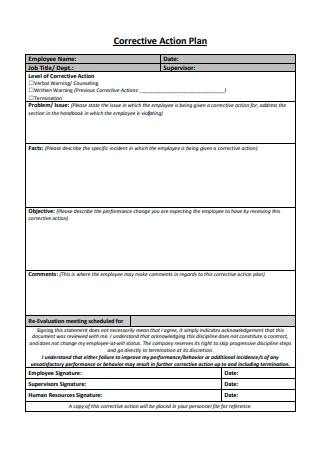
Employee Corrective Action Plan
download now -
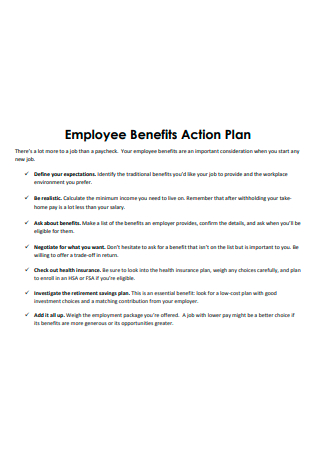
Employee Benefits Action Plan
download now -
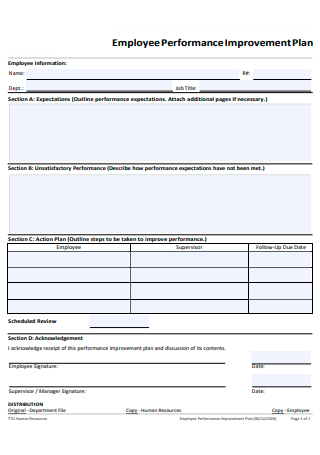
Employee Performance Improvement Action Plan
download now -

Basic Employee Action Plan
download now -
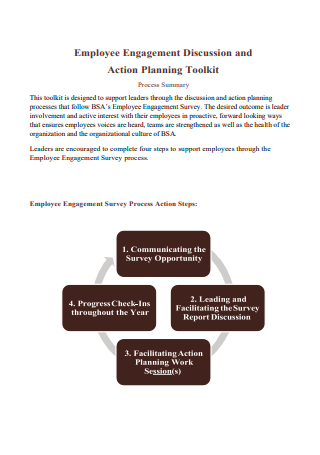
Employee Engagement Discussion and Action Planning
download now -
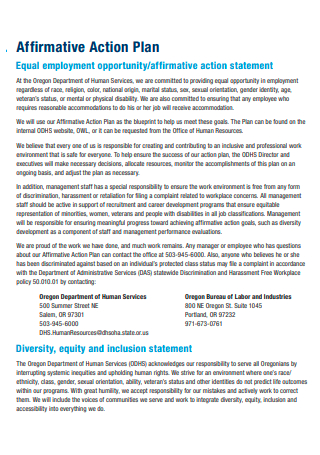
Employee Affirmative Action Plan
download now -
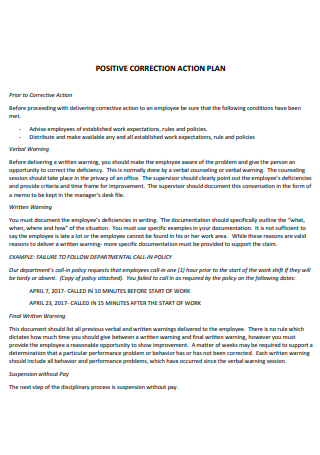
Employee Positive Correction Action Plan
download now -
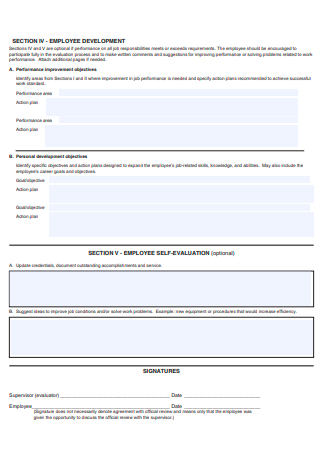
Employee Development Action Plan
download now -

Employee Job Site Emergency Action Plan
download now -
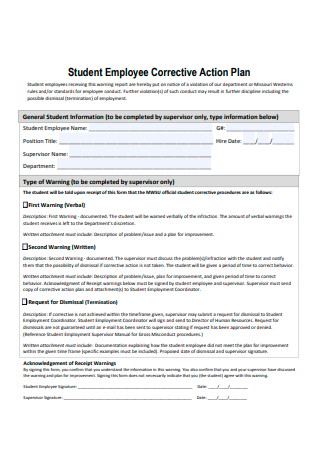
Student Employee Corrective Action Plan
download now -
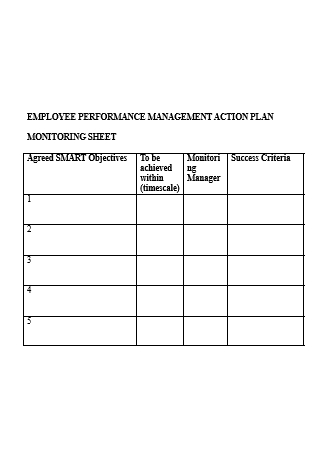
Employee Performance Management Action Plan
download now
What Is an Employee Action Plan?
Employee action plans are processes that an organization must develop to identify and prioritize its actions and identify quick and simple changes to demonstrate to its employees that it is committed to implementing an action plan in response to employee engagement feedback. An employee engagement action plan is the appropriate tool to get started with if your organization is determined to make a significant shift in how employee engagement is perceived in your firm. According to statistics, 36% of American workers are interested in their work and workplace – a figure that matches Gallup’s composite percentage of engaged workers in 2020. Around the world, 20% of employees are engaged at work. In the United States, actively disengaged employees have increased significantly, from 14% in 2020 to 15% through June 2021.
Benefits of Good Employee Relations
Employee interactions may either make or break a business. A business’s long-term success is contingent upon its ability to maintain positive employee relations. Employers and employees must interact effectively to avoid industrial disputes—a positive employer-employee connection results in increased motivation and engagement. When employees are content, they perform better. They will put in more effort, which results in delighted consumers and increased revenue. While building and maintaining positive employee relationships can be challenging in most organizations, healthy relationships among employees benefit the people and the organization. Managers should provide a positive example for employee relations.
Managers who have a positive working relationship with their staff contribute to developing a culture that fosters positive employee relations. Establishing and improving the bond between employee and employer can be accomplished through assessing employee happiness, recognizing and addressing workplace difficulties, and providing input and support to the company’s performance management system. The most successful firms worldwide prioritize labor management, establishing an atmosphere where individuals can maximize their abilities. Such an environment can be created when employees feel valued and respected for their contributions. Workers who receive no recognition for their work are significantly more prone to lose faith. However, organizations that engage in positive employee relations can reap several rewards.
How To Have an Effective Performance Action Plan
Dealing with substandard performance is almost certainly one of the most challenging tasks you will face as a manager. When a slew of other pressing responsibilities vie for your attention, it’s all too tempting to brush the issue under the rug and hopes it goes away. There are, however, repercussions to avoiding those uncomfortable talks you’d rather avoid. The employee continues to make errors, deadlines are missed, and clients complain – and other team members grow angry at always having to pick up the slack and correct work. One of the most efficient strategies for addressing underperformance is to sit down with the employee and develop a detailed performance improvement plan. Therefore, what should you include in the strategy, and how should you go about it?
Step 1: Determine the existence of any underlying concerns.
Before developing the plan, ensure that you are fully aware of any issues contributing to poor performance. Is the person having difficulty because they have not received the necessary training to perform the job? Are your coworkers being obnoxious or uncooperative? Are personal or family concerns interfering with their ability to concentrate? Remember that employees are not always forthcoming about health or disability challenges they may be facing out of fear of losing their job. If you have human resource software, you can review past absences, training, and performance reports. Are there any missed training opportunities, poor performance reviews, or an increase in sickness absence that would indicate an underlying issue with motivation or work-life balance? Ascertain that you have uncovered the trustworthy source of the problem. If you do not, you will be unable to provide the employee with the essential support or make necessary improvements to their position, and nothing will likely change.
Step 2: Involve the worker.
People are far more likely to embrace any improvement plan enthusiastically if they were involved in its development, so ensure that you sit down with the employee and have an open talk about your issues and what needs to change. Make it a conversation, not a rant. Allow them to contribute their perspective and be receptive to any suggestions about improving their performance. The tone should be firm but approachable. People must be aware that their work or attitude is deficient – but they must also know you have a genuine desire to assist them in improving and will assist them in any way possible. Consider whether or not to include human resources at this level. Allowing them to observe the performance chat may sound heavy-handed. It may stifle an open discussion – but it’s always a good idea to inform them that you’re having the conversation and what it’s about at this stage so that they may raise any concerns.
Step 3: Establish distinct objectives.
Any Performance Improvement Plan should begin with a list of specific objectives. The employee must understand what you want them to accomplish differently, when, and how their performance will be evaluated or measured. Ascertain that any goals or targets you establish are realistic and can be completed within a reasonable time range. People will feel overwhelmed even before they begin if the task at hand appears impossible. Break objectives down into small steps or chunks and schedule informal check-ins frequently. This way, individuals can see their progress and have regular opportunities to discuss any concerns or roadblocks encountered along the route. Maintain a complete record of all interactions in your HR software so that if the situation worsens later, you can demonstrate that you gave the employee a fair chance to change.
Step 4: Agree on training and assistance.
Inadequate skills might be the cause of poor performance. Occasionally, individuals are thrown into the deep end from day one of their employment and are forced to fumble their way through duties for which they are unprepared. Or perhaps their role has evolved, and they are now expected to take on new responsibilities or operate in areas with which they are unfamiliar. Training and development should be an intrinsic part of the Performance Improvement Plan in these instances. After identifying skill or knowledge gaps, you can consider the most effective strategy to close them. This does not always need sending individuals on formal training courses – although there are times when this is what they require. Occasionally, job shadowing a colleague can be a valuable method of gaining knowledge and competence. Alternatively, you may consider assigning a mentor to advise the employee on the most effective approach to tasks or situations. Any agreed-upon training should be documented in the plan – and it is critical to ensure that it occurs. You cannot hold people accountable for lousy performance unless you assist them in developing the skills necessary to execute their jobs properly.
Step 5: Regularly assess progress.
Establish regular meetings between you and the employee to discuss and document progress. At this level, documentation is critical. If performance does not improve and you decide to take disciplinary action, for example, having a detailed record of what was discussed and agreed upon. HR management systems that enable online check-ins to make it incredibly simple to keep track of interactions — and guarantee that critical documentation does not go missing. Having defined goals and a plan of action will almost always result in increased performance — people want to do a fantastic job and satisfy their management. However, if nothing has changed, you may need to take things a step further. Ascertain that you are completely clear about your company’s disciplinary process and the actions you must take – and that the employee understands they are entering a formal process. Solicit HR assistance and ensure that all pertinent policies, procedures, and meeting minutes are accessible to all parties concerned. This implies that everything is transparent. There are no grounds for misconceptions. You will demonstrate that you handled the situation fairly and effectively if the employee files a formal grievance.
FAQs
Is a pip necessarily a bad thing?
The PIP’s disadvantage is its poor reputation, which you should consider when approaching your employee about their PIP. Most employees view PIPs as part of the termination process, and they are frequently correct; the conclusion is frequently termination, transfer, or demotion.
What is a job strategy?
A job strategy is a social security term that refers to an ’employment route plan. The job strategy will detail all activities necessary to meet such requirements for job searchers who are subject to mutual obligation obligations under social security law.
What is the concept of mutual obligation?
In social security law, mutual obligation requirements as activity test or participation requirements encompass all job search-related or employment preparation activities that an individual may be compelled to perform in exchange for activity-tested payments unless they qualify for an exemption.
As long as you stay with your action plan and avoid deviating from it, it should only be a matter of period before you can say you accomplished what you set out to do. If you’re interested in discovering how to build various sorts of action plans, you may do so by browsing our website. It has a variety of articles that should be able to assist you. All that remains is for you to thoroughly review them to make optimal use of whatever information you have gathered.
